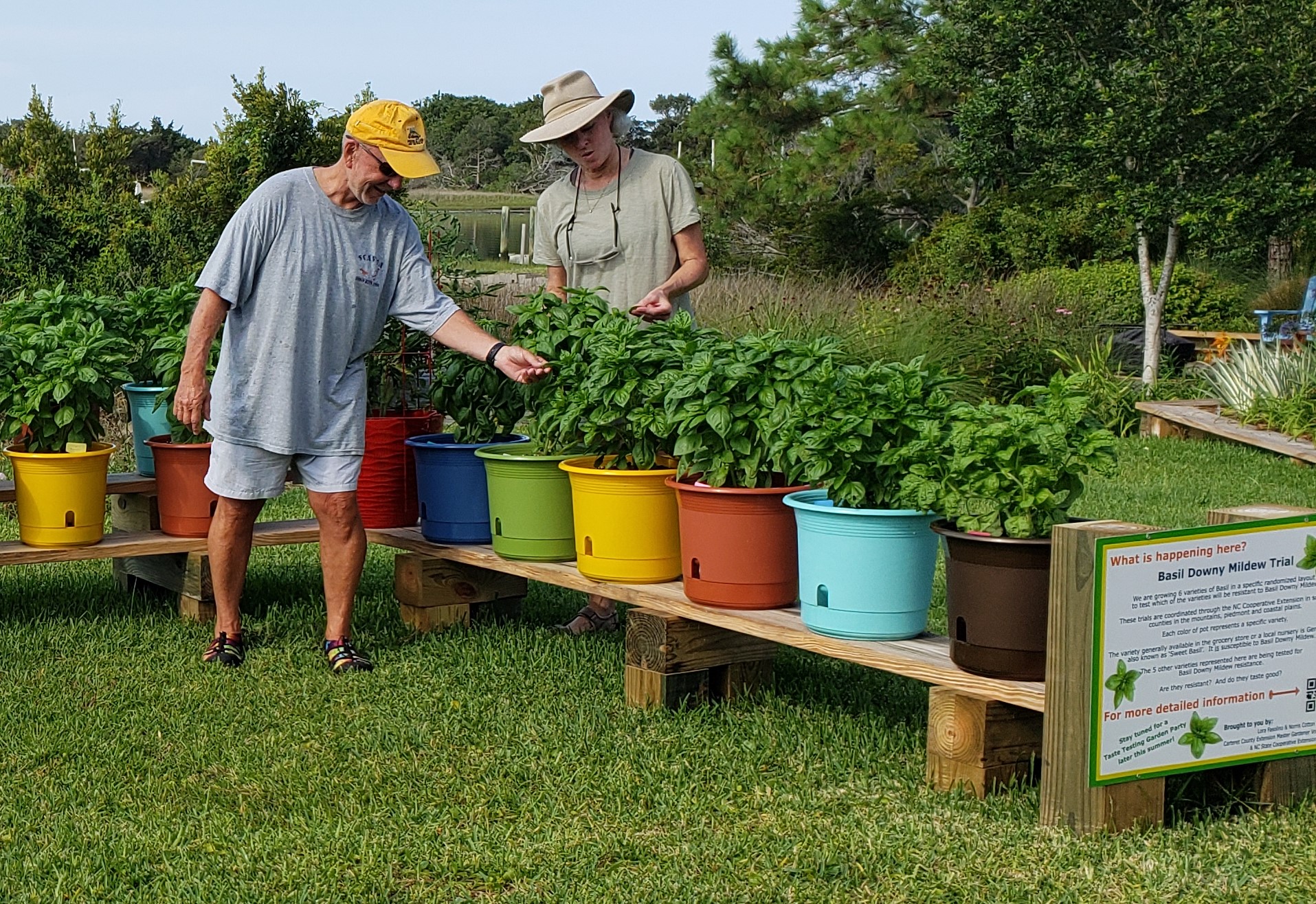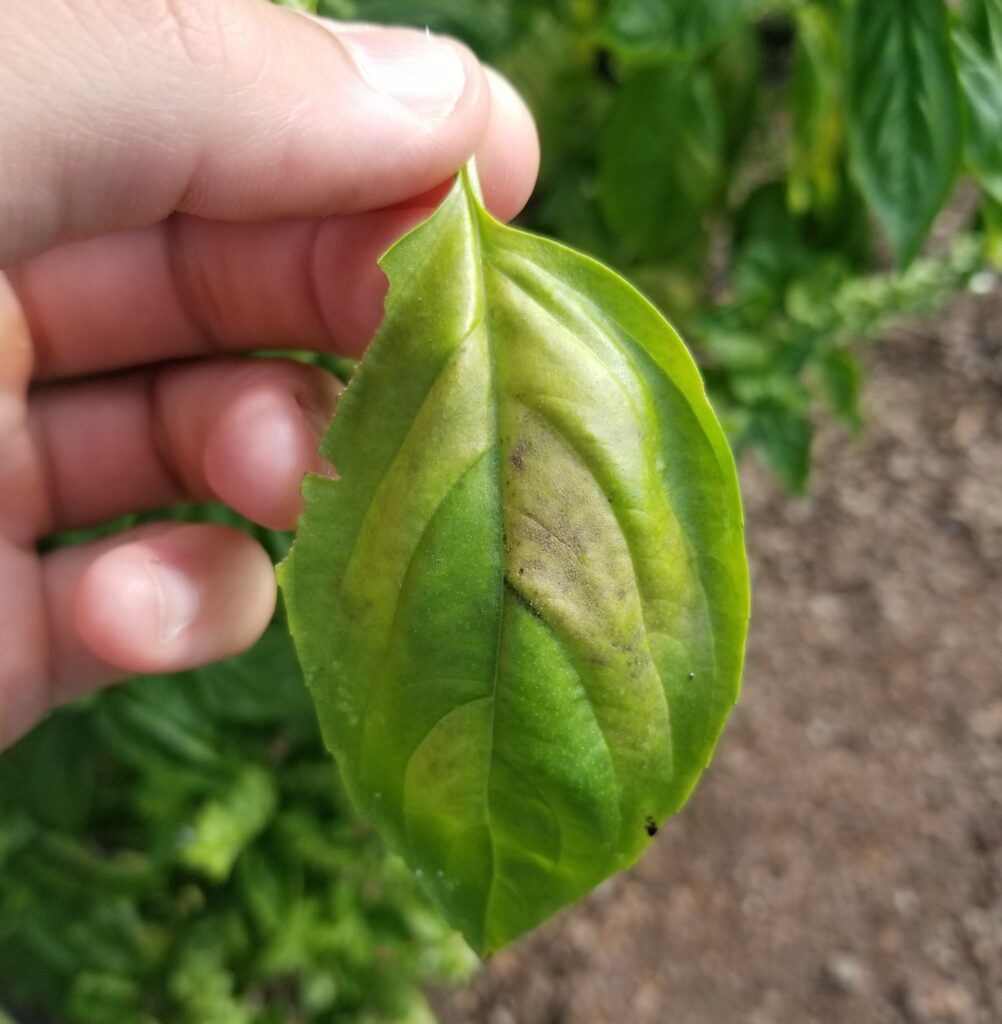That Time of Year Again: Basil Downy Mildew Visits NC
go.ncsu.edu/readext?885707
en Español / em Português
El inglés es el idioma de control de esta página. En la medida en que haya algún conflicto entre la traducción al inglés y la traducción, el inglés prevalece.
Al hacer clic en el enlace de traducción se activa un servicio de traducción gratuito para convertir la página al español. Al igual que con cualquier traducción por Internet, la conversión no es sensible al contexto y puede que no traduzca el texto en su significado original. NC State Extension no garantiza la exactitud del texto traducido. Por favor, tenga en cuenta que algunas aplicaciones y/o servicios pueden no funcionar como se espera cuando se traducen.
Português
Inglês é o idioma de controle desta página. Na medida que haja algum conflito entre o texto original em Inglês e a tradução, o Inglês prevalece.
Ao clicar no link de tradução, um serviço gratuito de tradução será ativado para converter a página para o Português. Como em qualquer tradução pela internet, a conversão não é sensivel ao contexto e pode não ocorrer a tradução para o significado orginal. O serviço de Extensão da Carolina do Norte (NC State Extension) não garante a exatidão do texto traduzido. Por favor, observe que algumas funções ou serviços podem não funcionar como esperado após a tradução.
English
English is the controlling language of this page. To the extent there is any conflict between the English text and the translation, English controls.
Clicking on the translation link activates a free translation service to convert the page to Spanish. As with any Internet translation, the conversion is not context-sensitive and may not translate the text to its original meaning. NC State Extension does not guarantee the accuracy of the translated text. Please note that some applications and/or services may not function as expected when translated.
Collapse ▲
Basil downy mildew test plot in Carteret County. Photo: Lora Fasolino
Basil downy mildew (BDM) has been confirmed in test plots maintained by Extension Master Gardener℠ volunteers in Haywood, Pender, Union, and Davidson counties. So far, it’s primarily shown up on the BDM-susceptible ‘Genovese’ variety.
BDM is a disease caused by Peronospora belbahrii, a fungal-like organism that reproduces by spores that are spread by the wind. It can decimate a basil crop quickly, leaving you without fresh basil for your favorite dishes.

Yellowing and browning of leaf tissue is an early sign of BDM infection. Photo: Sam Boring
Extension Master Gardener volunteers are helping with trials to compare five basil varieties bred to be BDM-resistant to the ever-popular yet BDM-susceptible ‘Genovese’ variety. The varieties in the trial are ‘Rutgers Obsession,’ ‘Rutgers Devotion,’ ‘Rutgers Thunderstruck,’ ‘Rutgers Passion,’ and ‘Prospera.’ Since June, Master Gardener volunteers have examined the plots weekly and rated the appearance of BDM symptoms on individual plants. Their work will help determine the best basil varieties to plant in NC.
Extension Master Gardener volunteers will continue their research through September. Stay tuned as we will post more information later in the year on how the resistant varieties stood up to this disease and how they scored in taste tests.
Think You Might Have BDM on Basil Plants in Your Garden?
Extension agents and Master Gardener volunteers at your local N.C. Cooperative Extension center can help determine if the symptoms you are seeing are caused by BDM or another issue and what you can do about it. Use the Garden Help Directory to find contact information for the Extension center in your county.
Learn More
- Article: Why are the leaves of my basil turning yellow?
- NC State Extension fact sheet: Basil downy mildew


